Top 10 Game-Changing Earth Photos From Landsat Satellites
Landsat Looking at Earth for 40 Years
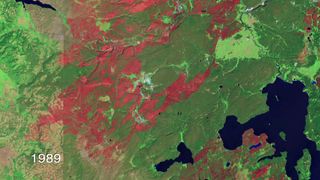
Over the past 40 years, the Landsat satellites have documented the world's terrain from above. Here are the satellite's 10 most significant observations, as selected by NASA and U.S. Geological survey scientists.
Forest Recovering From Mount St. Helens Eruption
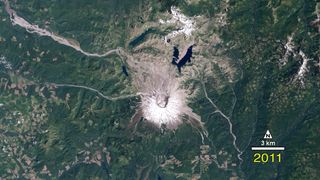
The 1980 Mount St. Helens eruption was one of the most significant natural disasters in the United States in the past half-century. Landsat witnessed the destruction and partial re-birth of the region.
International Deforestation Patterns in Tropical Rainforests
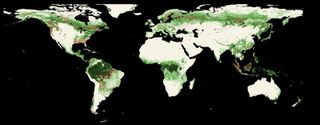
Areas of forest cover loss (in red) during the period 2005-2010. Background image is the percent of forest cover in the year 2000, from MODIS data.
Beijing: Rise of an Economic Superpower
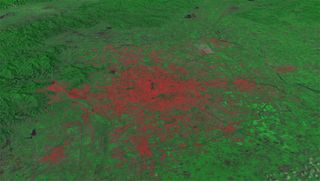
Beijing's expansion is representative of the dramatic urbanization and industrialization of Asia during the Landsat era.
A Shrinking Sea
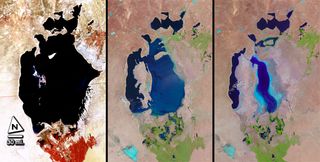
The Aral Sea in Central Asia began disappearing in the 1960s because of the diversion of its two feeder rivers for agriculture. From left to right, the images were produced in 1977, 1998 and 2010.
Kuwait Oil Fires
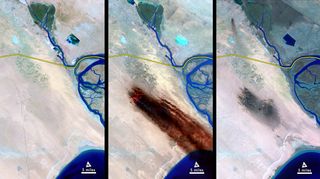
As Iraqi troops withdrew from Kuwait at the end of the first Gulf War, they set fire to over 650 oil wells. Landsat caught the largest oil spill in human history.
International Borders: Mexico and Guatemala
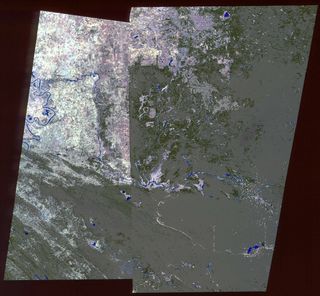
In 1988, the first publicized Landsat image of the Mexico-Guatemala border showed clear-cut forest in Mexico and untouched trees in Guatemala. This image had a profound impact on the leaders of the two nations and influenced the establishment in 1990 of Guatemala's Maya Biosphere Reserve and other management and conservation efforts in Central America.
Yellowstone National Park Historic Fires of 1988

In 1988, fire transformed Yellowstone National Park into an apparent wasteland. Landsat captured the burn scars from the fires and the progress of recovery.
Columbia Glacier Retreat
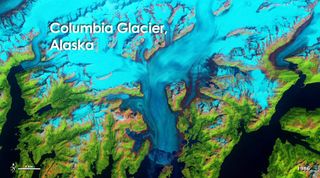
The Columbia Glacier in Alaska is one of many vanishing around the world. Glacier retreat is one of the most direct and understandable effects of climate change.
Mining for Water in Kansas
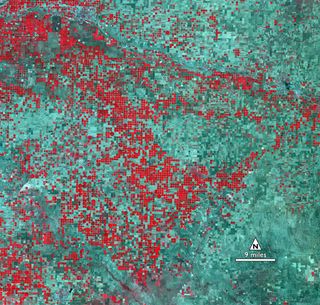
This image from 2011 shows the transformation of Kansas farmland from dryland, rectangular fields to circular irrigated fields from center-pivot irrigation systems. The mining of ground water for agriculture has been a significant trend globally over the last half-century, and these images of a region in Kansas highlight the trend within the United States.
Uncovering Antarctica
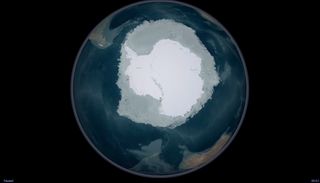
In 2007, more than 1,100 Landsat 7 images were used to create the first ever, high-resolution, true color map of Antarctica. The Landsat Image Mosaic of Antarctica is a virtually cloud-free, 3-D view of Antarctica's frozen landscape.
Join our Space Forums to keep talking space on the latest missions, night sky and more! And if you have a news tip, correction or comment, let us know at: community@space.com.
Get the Space.com Newsletter
Breaking space news, the latest updates on rocket launches, skywatching events and more!

Space.com is the premier source of space exploration, innovation and astronomy news, chronicling (and celebrating) humanity's ongoing expansion across the final frontier. Originally founded in 1999, Space.com is, and always has been, the passion of writers and editors who are space fans and also trained journalists. Our current news team consists of Editor-in-Chief Tariq Malik; Editor Hanneke Weitering, Senior Space Writer Mike Wall; Senior Writer Meghan Bartels; Senior Writer Chelsea Gohd, Senior Writer Tereza Pultarova and Staff Writer Alexander Cox, focusing on e-commerce. Senior Producer Steve Spaleta oversees our space videos, with Diana Whitcroft as our Social Media Editor.


